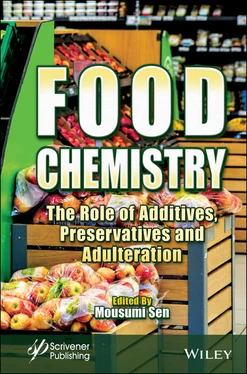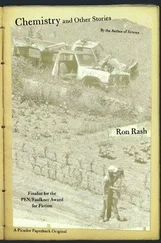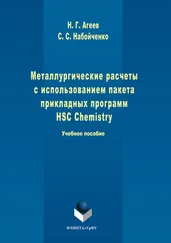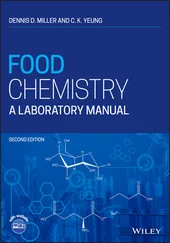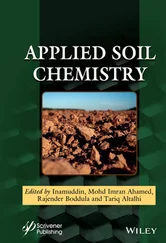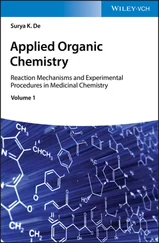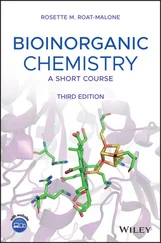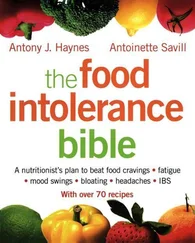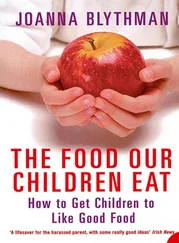Food Chemistry
Здесь есть возможность читать онлайн «Food Chemistry» — ознакомительный отрывок электронной книги совершенно бесплатно, а после прочтения отрывка купить полную версию. В некоторых случаях можно слушать аудио, скачать через торрент в формате fb2 и присутствует краткое содержание. Жанр: unrecognised, на английском языке. Описание произведения, (предисловие) а так же отзывы посетителей доступны на портале библиотеки ЛибКат.
- Название:Food Chemistry
- Автор:
- Жанр:
- Год:неизвестен
- ISBN:нет данных
- Рейтинг книги:5 / 5. Голосов: 1
-
Избранное:Добавить в избранное
- Отзывы:
-
Ваша оценка:
- 100
- 1
- 2
- 3
- 4
- 5
Food Chemistry: краткое содержание, описание и аннотация
Предлагаем к чтению аннотацию, описание, краткое содержание или предисловие (зависит от того, что написал сам автор книги «Food Chemistry»). Если вы не нашли необходимую информацию о книге — напишите в комментариях, мы постараемся отыскать её.
A unique book detailing the impact of food adulteration, food toxicity and packaging on our nutritional balance, as well as presenting and analyzing technological advancements such as the uses of green solvents with sensors for non-destructive quality evaluation of food.
Audience Food Chemistry: The Role of Additives, Preservatives and Adulteration
Food Chemistry — читать онлайн ознакомительный отрывок
Ниже представлен текст книги, разбитый по страницам. Система сохранения места последней прочитанной страницы, позволяет с удобством читать онлайн бесплатно книгу «Food Chemistry», без необходимости каждый раз заново искать на чём Вы остановились. Поставьте закладку, и сможете в любой момент перейти на страницу, на которой закончили чтение.
Интервал:
Закладка:
2.3.6.12 Gelling Agent
These are the food additives that are used with the purpose to thicken and stabilise various foods like jelly, desert, and candies. The change the texture of a food by forming gel. Typical gelling agents are natural gum, starches, pectin, agar, and gelatin. The provide the food a texture by the formation of gel. Some stabilizers and thickening agent are also gelling agent. These agents are polysaccharide or protein as per their nature.
2.3.6.13 Propellants
Propellants are the food additives that are used in foods like carbonated drinks to expel it out of their container. A propellant creates more pressure to liquid food so that it will come out from its container. It is also used in whipped creams. Common propellant includes carbon dioxide, nitrogen, nitrous oxide, propane, and butane. They are also used to reduce the amount of oxygen in contact with the food in the container. Nitrous oxide and carbon dioxide are better propellants as they dissolve in the liquid food and expand during its release from its container.
2.3.6.14 Foaming Agent
These additives are also known as aerating agent. It facilitates the formation of foam and helps in the formation of uniform dispersion of gaseous phase over liquid or solid food. They are used in toppings, cake mixes, whipped creams, beverages, and soft drinks. Examples are propylene glycol ester of fatty acid, glycyrrhizin, alginic acid, and polysorbate.
2.3.6.15 Seasoning
They are the additives from plant origin. They are added in food and drinks to improve the taste and aromatic fragrance. They are obtained from different parts of the plant like root, leaves, flower, bud, fruits, seeds, and whole plants. A list of some common spices along with their bioactive compounds are presented in Table 2.6. They also add phytonutrients, essential oil, antioxidants, vitamin, and minerals to the food where it is applied [20].
Table 2.6 List of some common spices and their bioactive compounds [21].
| Spice | Bioactive compound | Benefits |
|---|---|---|
| Black pepper | Piperine, piperidines, and pyrrolidines | When applied in meat products, it decreases lipid peroxidation. |
| Paprika | Capsaicin | It reduces inflammation and stimulate digestion. |
| Turmeric | Curcumin, curcuminoid | It reduces join pain and stomach pain. |
| Ginger | Gingerol, shogaols, paradols | It has anti-blood clotting activity, stimulates digestion, and reduces bacterial and fungal infection. |
| Cardamom | Eucalyptol, limonene, cineole, and α-terpinyl acetates | It has anti-microbial properties and can improve cardiovascular health. |
| Vanilla | Vanillin | It has antioxidant and antimicrobial property. |
| Black cumin | Thymoquinone, dithymoquinone, and thymohydroquinone | It has anti-microbial properties. |
| Clove | Eugenol | It has antioxidant and antimicrobial property. |
| Cinnamon | Trans-cinnamaldehyde, eugenol, and linalool | It has antioxidant and antimicrobial property. |
2.3.6.16 Curing Agents
These are the food additives that are used to preserve meat. They give desirable color and flavor to the meat. They prevent the growth of microorganism and prevent toxin formation.
2.3.6.17 Probiotics
Probiotics are live microbial additives that are used in many food products like fermented milk. It can balance intestinal microbial composition, reduce the serum cholesterol, improve the immunity and metabolic process, and reduce the food allergy symptom of infants. Probiotic food comprises 60%–70% of total available functional food in the market. A wide variety of microorganism is considered as potential probiotics but the predominant bacteria are Lactobacillus and Bifidobacterium species. Other probiotic species include Lactococcus , Enterococcus , Saccharomyces , Propionibacterium , and Aspergillus species. Lactic acid bacteria can contribute to safety of food, offer organoleptic, nutritional, and health advantages. Viability of probiotic microorganism is dependent on factors like food ingredients, processing operation, packaging and storage, fermentation conditions, and presence of protective agents. Lactic acid bacteria are able to produce exopolysaccharides that play a major role in the production of fermented dairy products like yoghurt, cheese, and milk-based dessert. The exopolysaccharide is used as a texturizing and stabilizing agent. Nowadays, consumers prefer safe and healthy food without additives. The exopolysaccharide has the potential for development of improved products like low fat/low milk solid yoghurt. These exopolysaccharides have anti-tumor and immune modulating capacity so with these the lactic acid bacteria have the potential for development of functional food [22].
2.3.6.18 Other Food Additives
Other food additives include clarifying agent like gelatine and synthetic resin that remove the sediment and haziness of fruit juice. Enzymes are added to get desirable changes like pectinase used for clarification of juice, papain for meat tenderization, and renin for cheese making. Freezing agents like liquid nitrogen that evaporates very quickly and used to quick chilling of food. Solvents like alcohol and glycerine are used to dissolve flavor, color, and inert gases for packaging to prevent oxidative changes.
2.3.6.19 Indirect Food Additives
These are the food additives that become the part of food due to its packaging, storage, or other handling process. They are generally present in trace amount. Its regulation guideline by FDA includes that all food packaging material manufacturers must ensure that all materials coming in contact with food are safe before getting permitted for its use. These additives are also termed as incidental additives. For example, these groups of additives may include chemical substances used in packaging material often in detectable level but they can migrate into the food. FDA found that a chemical known as acrylonitrile used for the fabrication of plastic beverage bottles may migrate into food and may cause cancer. So, then its approval was withdrawn.
2.4 Health Effect of Food Additives and Preservatives
Additives and preservatives are essential for food the storage of food. With the increase of the use of processed food, there is an increasing use of food additives and preservatives. As some of these additives were found to have adverse health effect, there was a need to approval of these food additives and preservatives after the details study of the effect of them on human being. Some of the food additives were found to cause allergies, hyperactivity, asthma, and reactions like rashes, vomiting, and headache. They can be the cause of different health hazards like the following:
a. Artificial food colors are found to be carcinogenic agent. They can cause hyperactivity and allergies.
b. Nitrites and nitrates can develop carcinogen nitrosamine.
c. Sulfites can cause asthmatic reaction.
d. Sweeteners can cause obesity, dental cavity, diabetes, and increase blood fat. Artificial sweetener can cause hyperactivity and some of them are found carcinogen. Government cautions children and pregnant women against the use of it.
e. Artificial flavor and monosodium glutamate can cause allergic reactions.
f. BHT can be toxic to nervous system.
Читать дальшеИнтервал:
Закладка:
Похожие книги на «Food Chemistry»
Представляем Вашему вниманию похожие книги на «Food Chemistry» списком для выбора. Мы отобрали схожую по названию и смыслу литературу в надежде предоставить читателям больше вариантов отыскать новые, интересные, ещё непрочитанные произведения.
Обсуждение, отзывы о книге «Food Chemistry» и просто собственные мнения читателей. Оставьте ваши комментарии, напишите, что Вы думаете о произведении, его смысле или главных героях. Укажите что конкретно понравилось, а что нет, и почему Вы так считаете.
